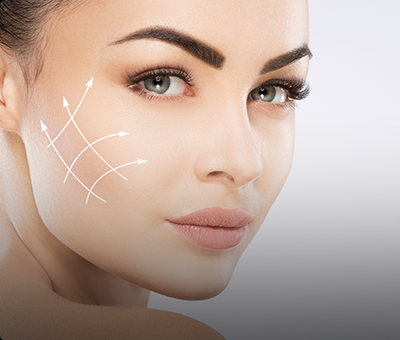SURGICAL
HOME / SURGICAL
Surgical Facial Procedures
Surgical Body Procedures
Face Lift

The face lift procedure has been very popular for various decades, and thankfully it has evolved enough to avoid the stretched unnatural look of the fist techniques. These put a lot of the tension on the stretched skin and often left areas like the neck untouched, making the procedure obvious and less effective aesthetically. A face lift is generally performed to rejuvenate the face and take away the tired, aged and sometimes sad appearance that sagging and loose tissue can give to a person.
There are many types of face-lifting procedures, the deep plane face lift being one of the most complete and lasting options as it also includes improvements to the neck.
General anesthesia is used for the deep plane face lift as many incisions are need. A first incision is made under the chin and a liposuction needle is introduced to reduce the neck and double chin. The muscle neck is sewn together and the incisions are all made behind the ear, into the hair line to make them less visible. Other facial structures that are altered are the cheek pads, and the muscles around the face. The skin is then carefully re-aligned and any excess is removed. To prevent heavy scarring, the skin is sewn back together by layers.
POTENTIAL RISKS AND COMPLICATIONS
Before the procedure, you need to sit down and talk to your surgeon about your wishes, expectations and risks of the surgery. It’s important that you be honest with any questions or concerns that you may have before you agree to a facelift. A facelift is a major procedure to the face and trauma will appear in the form of swelling and bruising. If not treated correctly the incision may get infected or produce irregular scarring, not at all desirable on the face. If you suffer from pre-existing medical conditions that could affect your healing process, you should discuss them with your doctor before hand.
WHAT TO EXPECT POST SURGERY
The patient generally goes home the same day of the surgery. A special ointment is applied to the incision lines for 10 days and oral antibiotics are usually prescribed as a preventive step and the face must be kept cool and moist at all times. Stitches will be removed after a week, but physical activity must be kept to a minimum for at least another two weeks, and exposure to the sun is no recommended for another 6 months.

